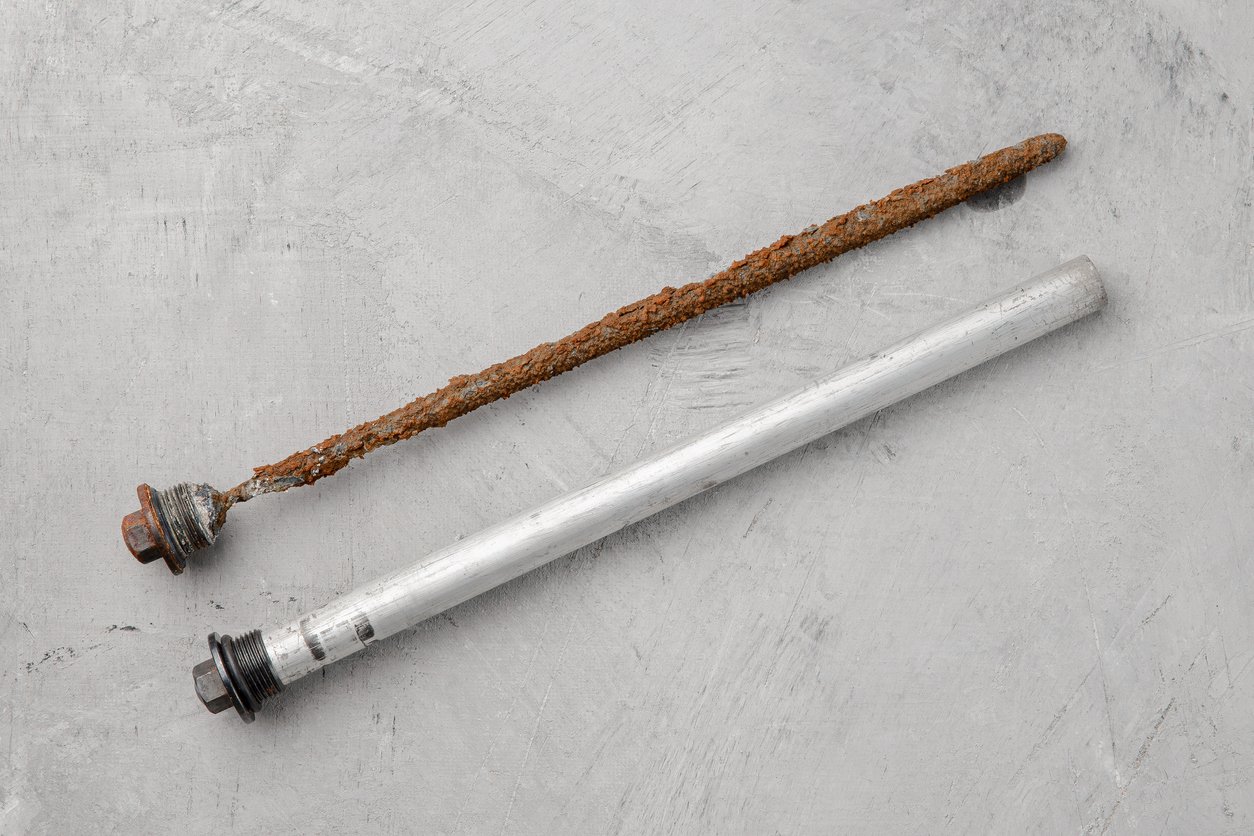When Should You Replace the Anode Rod for a Water Heater?
In Seattle, where the water is generally soft to moderately hard, maintaining your water heater is essential to ensure it performs efficiently. One key component in this maintenance is the anode rod. This guide will cover what an anode rod does, how often you should replace it, and signs that indicate it might be time for a replacement.
What is an Anode Rod?
The anode rod is a crucial part of your water heater's tank, typically made from magnesium, aluminum, or a combination of these metals. Its primary function is to protect the tank from corrosion. By attracting corrosive elements in the water, the anode rod sacrifices itself to keep the tank from rusting. In Seattle's water, which can vary from soft to moderately hard, this protection is particularly important to ensure the longevity of your water heater.
How Often Should You Replace the Anode Rod?
On average, an anode rod should be replaced every 2 to 5 years. However, in Seattle, where the water quality can affect corrosion rates, you might need to adjust this timeline. Soft water, common in the area, can be more corrosive, potentially requiring more frequent replacements. If you have hard water, your anode rod may last a bit longer. It’s a good practice to check the anode rod every couple of years as part of your regular water heater maintenance routine.
Signs That the Anode Rod Needs Replacing
Smelly or Discolored Water: If you notice a rotten egg smell or discoloration in your hot water, it could be a sign that the anode rod is deteriorating. This odor is often caused by hydrogen sulfide gas, which forms when the anode rod is no longer effective.
Rusty Water Heater Tank: Rust or corrosion on the outside of your water heater tank may indicate that the anode rod is not performing well. Inspect the rod for significant corrosion to determine if it needs replacing.
Strange Noises: Sediment buildup can lead to banging or rumbling noises in your water heater. While these noises are not always directly related to the anode rod, it’s worth inspecting the rod if you hear unusual sounds.
Leaks: Leaks around the water heater can signal that the tank is corroding. If you spot any leaks, check both the anode rod and the tank for signs of damage.
Age of the Anode Rod: If the anode rod is nearing the end of its expected lifespan (around 2 to 5 years), consider replacing it proactively, even if you're not experiencing other issues.
How to Replace an Anode Rod
Replacing an anode rod is a manageable task for those who are comfortable with basic home maintenance, but you may want a call a local plumber in Seattle if you aren’t. If you’re in Seattle, where keeping your water heater in good shape is essential due to local water conditions, here’s a step-by-step guide to help you through the process:
Turn Off the Power and Water Supply:
For electric water heaters, switch off the power at the circuit breaker.
For gas water heaters, set the thermostat to the "pilot" setting.
Turn off the water supply to the water heater by closing the cold water valve.
Drain the Tank:
Attach a hose to the drain valve at the bottom of the tank.
Open the drain valve and allow a few gallons of water to drain out. This step is crucial to lower the water level below the anode rod.
Locate the Anode Rod:
The anode rod is usually found on the top of the tank. It may be covered by a plastic or metal cap.
For some models, the anode rod might be located on the side of the tank. Consult your water heater’s manual if you’re unsure.
Remove the Old Anode Rod:
Use a socket wrench or a special anode rod tool to unscrew and remove the old rod.
Be cautious, as the rod may be heavy and covered in corrosion.
Install the New Anode Rod:
Thread the new anode rod into the opening where the old one was removed.
Tighten it securely with the wrench, but avoid over-tightening.
Restore the Water Supply and Power:
Close the drain valve and remove the hose.
Turn on the cold water supply and allow the tank to fill completely.
Once the tank is full, turn the power back on (or the gas supply for gas heaters).
Check for Leaks:
Inspect the area around the anode rod and the tank for any signs of leaks. Tighten any connections if necessary.
Test the Heater:
Turn on a hot water faucet and check if hot water flows properly. Ensure the heater is functioning correctly.
Tips for Success
Use the Right Replacement Rod: Ensure you purchase the correct type and size of anode rod for your water heater model. If you're unsure, consult your water heater's manual or ask a local Seattle plumbing professional.
Safety First: Always prioritize safety when working with electrical appliances and hot water. If you're not comfortable performing the replacement yourself, consider hiring a professional who is knowledgeable in water heater repair.
By following these steps, you can effectively replace the anode rod in your water heater and maintain its efficiency and longevity. Regular replacements and inspections are key to ensuring your water heater continues to provide reliable hot water for your home in Seattle.
Final Thoughts
Replacing the anode rod in your water heater is a critical part of maintaining its efficiency and extending its lifespan. By staying on top of regular inspections and timely replacements, you can prevent costly repairs and ensure a reliable supply of hot water. If you’re unsure about the condition of your anode rod or need assistance with replacement, consider reaching out to a local Seattle plumber for expert help.

